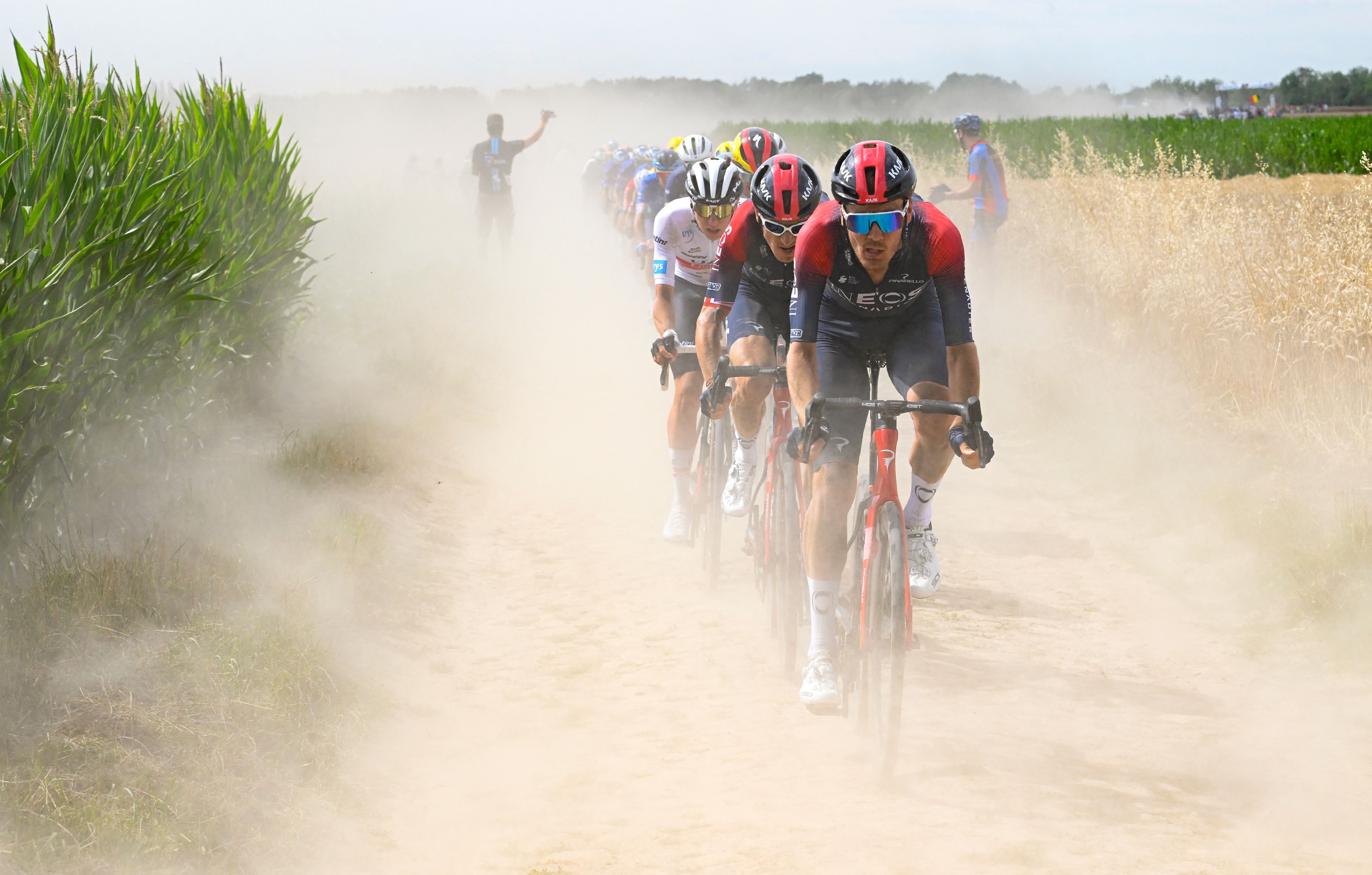
The Tour de France's organisers have revealed that they are not "crazy enough" to put cobbles in on stage one of the race in 2025, which is why they are absent from the route.
There was much speculation that the pavé of Paris-Roubaix would feature in the opening stages of the 2025 edition with the Grand Départ taking place in Lille, close to the sectors from the famous race. However, on Thursday, ASO, the Tour's organisers, revealed three routes which would not contain any pavé.
Cobbles normally accompany the Tour when it heads to Lille, as happened in 2022 and in 2014, but it will largely be a tarmac affair. The gravel stage in the 2024 Tour might have prevented the route directors from heading off-asphalt again so quickly, but also the fact that they would have to feature very early in the race.
The Tour's route designer, Thierry Gouvenou, told L’Équipe that pavé would be absent because of the decisions on start and finish towns, and also because cobbles would be put in on stage one.
“Given the choice we made of [start and finish] towns, we’d have had to have them on stage 1” - starting and finishing in Lille - “because the pavé is all in the south of the region,” Gouvenou told L’Équipe. “We didn’t feel crazy enough to put the riders in the cobbles on day 1.
“So we abandoned that idea. They [the pavé sectors] will be back, but not in 2025.”
Local rider and cobbled Classics specialist Adrien Petit, who rides for Intermarché-Circus-Wanty, supported the decision to keep cobbles away from the Grand Départ.
“It will be a tough opening weekend, the riders will be very nervous, and that’s why there’s no pavé,” he said. “It’s wise, we all know about how risky these opening stages are in any case.”
Stage one is a loop from Lille to Lille, and looks to be one for the sprinters. After that, there will be a punchy affair from Lauwin-Planque to Boulougne-sur-Mer, with the third stage heads from Valenciennes to Dunkerque, another hilly day.
Gouvenou was clear that the second stage, at 209km and with a jagged profile, would be a tricky day.
“It’s a long stage, and we deliberately included lots of changes of direction in the hope that crosswinds could have an effect,” he said.
“Saint-Étienne-au-Mont (900 metres at 11%) which has 300-400 metres at 15% is as hard as the Pike on stage 1 of the 2023 Tour.
“Then there’s Outreau, similar to the Cap-Blanc-Nez climb where Wout van Aert (Jumbo-Visma) attacked (on stage 4 in the 2022 Tour) and the final climb to Boulogne-sur-Mer.”
“All in all, it’s a much tougher stage than the one here in 2012”, when Peter Sagan won at Boulogne-sur-Mer, the route designer told La Voix du Nord.
“The final climb is less hard than the Porte Gayole, the last climb which was tackled that year. But what comes before makes for a much more difficult stage.
“With the new way of racing we have these days, I’m sure we’ll have all the top names right at the front of the pack. Anybody who’s badly positioned at the foot of these climbs risks losing a stack of time.”







